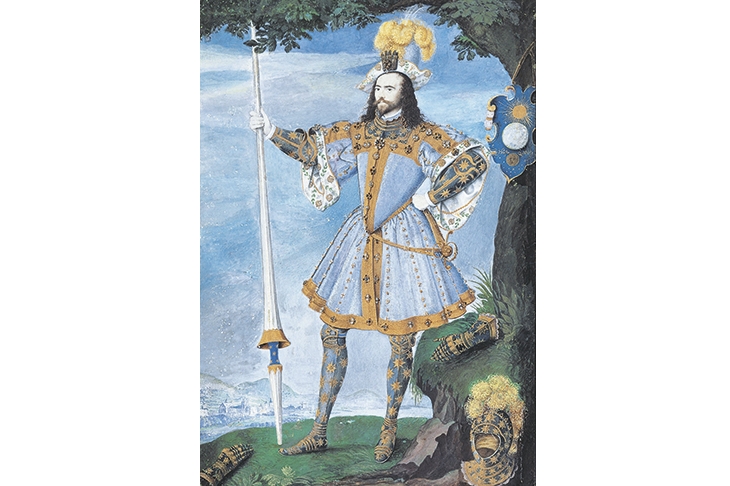Roy Strong first encountered the portraiture of Elizabeth I and her court while a schoolboy in post-war Edmonton. In the early 1950s, as a second Elizabethan age beckoned, the teenaged Strong unexpectedly found himself face to face with the ‘Ermine’ and ‘Rainbow’ portraits of the Virgin Queen on a day trip to nearby Hatfield House. It was, as he later recalled in his Self-Portrait as a Young Man, ‘the birth of a love affair’. Shortly after, he began compiling a card index of Elizabeth I’s portraits and trying his hand at painting miniatures in the style of Nicholas Hilliard, the most celebrated portraitist of her reign. A PhD from the Warburg Institute followed, for a thesis on Elizabethan portraiture and court culture, written under the supervision of the great Renaissance scholar Dame Frances Yates.
First as assistant keeper (1959–67) and director (1967–73) of the National Portrait Gallery and then as director of the V&A (1973–87), Strong devoted the better part of 30 years to pioneering exhibitions and publications on all things Elizabethan (with occasional forays back to Henry VIII’s reign and forwards to the early Stuarts). The next 30 years saw him branch out, with the publication of his indiscreet Diaries, with their fly-on-the-wall accounts of, among other things, his years at the NPG and the V&A, together with histories of a dizzying array of topics: gardens, grand eating, the coronation ritual and the English country church, to name just a few. Now, aged 84, Strong has come full circle, with a new book dedicated ‘To the Immortal Memory of Elizabeth I, Queen of England’.
The Elizabethan Image is intended as ‘an introduction for the average reader to a subject that has undergone fragmentation on a huge and bewildering scale’. To that end, Strong has returned to his landmark research of more than three decades ago, seamlessly knitting it together with work undertaken since by other art historians (which he generously acknowledges), as well as with new research of his own. For readers feeling rusty on their Elizabethan history, a concise list of key dates and events (political as well as cultural) appears at the back of the book. So, too, does a brief ‘list of artists’, which provides potted biographies of the main painters of the reign.
‘Portraits of Elizabeth,’ as Strong rightly notes, ‘have been the subject of an ever-escalating body of academic literature over the last few decades, in which the objects, the portraits themselves, have tended to get lost.’ Happily, there is no trendy, obfuscatory jargon here; just the elegantly engaging prose which has long been a hallmark of Strong’s art-history writing. Yale’s lavish production values also help to ensure that the portraits themselves do not get lost: there are more than 200 illustrations, the vast majority of them in colour. Gloriana herself is, of course, well-represented. But so are the aristocracy and landed gentry, as well as the aspiring men and women of the emerging middle classes.
Strong has always had an instinctive feel for, and understanding of, the Elizabethan mindset and aesthetic. This book is no exception — and is particularly good on the ways in which the upwardly mobile used portraiture to signal their social ascent. Learned yet accessible, The Elizabethan Image provides a rich overview of the portraiture of the period which will appeal to fans of Strong’s original publications as well as to a new generation of readers. The current work is aimed at recovering what Elizabethan portraits reveal about ‘the person and the society for which they were created’. One does not have to agree with all of Strong’s conclusions to be captivated by his deep knowledge of, and clear love for, the subject matter at hand.
Just as a visit to Hatfield House sparked the young Strong’s interest in Elizabethan portraiture, so his early writings did the same for me. (Elizabethan portraits were thin on the ground in Midwest America, where I grew up.) Strong’s enthusiasm was, and is, infectious. I await his planned follow-up volume, The Jacobean Image, keenly.






Comments